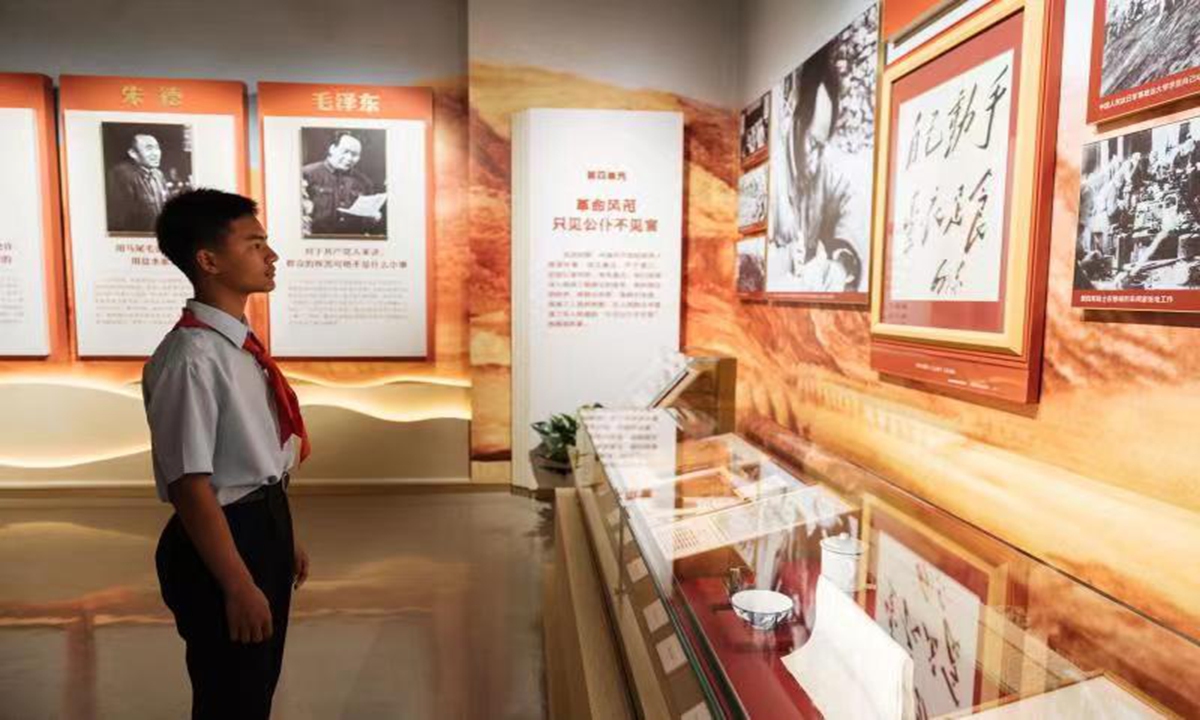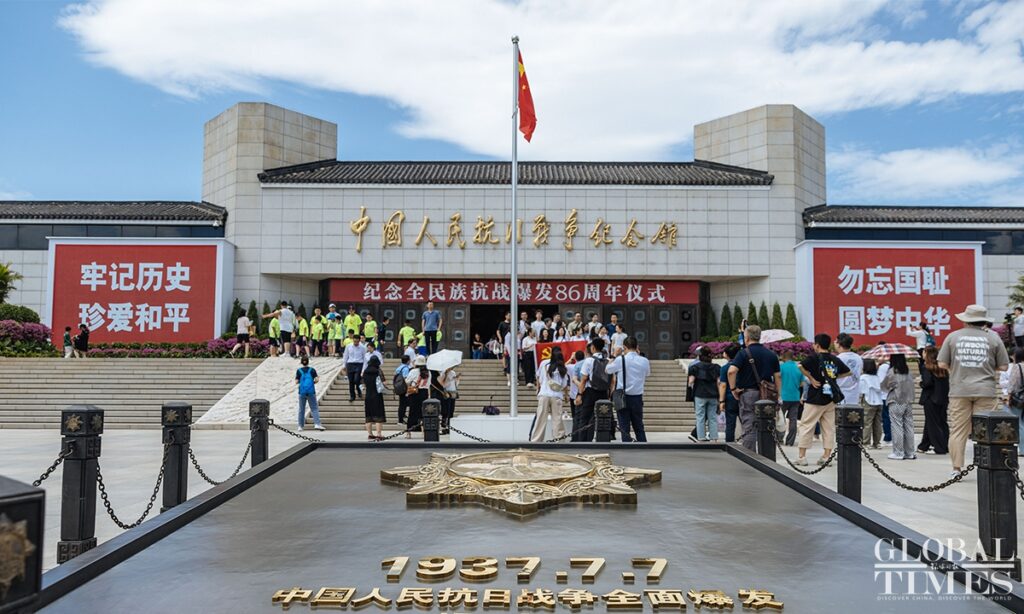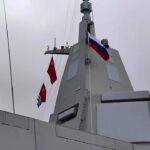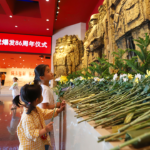More than 130,000 people have visited since July
August 15 marks the 78th anniversary of Japan’s surrender in World War II, following with September 3, China’s Anti-Japanese War Victory Day.
The dark period of war has carried great harm to the Chinese people, and the spirit formed during resisting the aggression of Japanese invaders still lives on, bringing Chinese people courage as well as a desire for peace.
Ahead of the remarkable date, the Global Times talked with Luo Cunkang, Party Secretary at the Museum of the War of Chinese People’s Resistance Against Japanese Aggression andSecretary-general of the International WWII Museum Association.
He described in detail the memorial activities of the museum, while stating why, even after decades, that war should still be remembered.
Show and tell the history
Built in 1987, the Museum of the War of People’s Resistance Against Japanese Aggression is located near the Marco Polo Bridge, or the Lugou Bridge, where the invasion by the Japanese started in 1937. Today, it is an important patriotic education base.
Every year, August and September are the busiest months for the museum, with rich activities provided to the public.
This year, the museum is expected to welcome some young volunteers as staff.
“The Beijing No. 12 Middle School Detachment of the Volunteer Service Team will join the service team of our museum. We think about 500 people will participate,” Luo told the Global Times on Saturday.
On the same day, the commentator of the museum will also carry out live broadcast activities online, focusing on August 15, 1945, when Japan announced its unconditional surrender and the Chinese people celebrated the victory of the Anti-Japanese War.
On September 3, the museum will hold music activities, including various forms of concerts such as orchestral performances, recitals, and choruses.
In addition, from September 3 to September 23, the museum will hold a photo exhibition of anti-Japanese war relics in Macao in collaboration with the Oral History Association of Macao.
“We are preparing to invite some students from the island of Taiwan, Hong Kong and Macao special administrative regions in Beijing to enter the museum on September 18, to let them learn about the past history of the Anti-Japanese War,” Luo said.
“During the war, the compatriots from all parts of China were united as one. The history of heroic struggle will help to enhance the emotional bond among these young students,” Luo said.
In addition, museum will also launch activities suitable for primary and middle school students after the school year starts, such as providing one hour after class to tell children about the history of the Anti-Japanese War.
After the epidemic, this year, from the beginning of the year up to now, the museum has received more than 400,000 visitors, including more than 800 foreign tourists from countries such as Japan, the UK, the US and Russia, according to Luo.
Since the summer vacation begun in July, more than 130,000 people have stepped into the museum, many beingyoung students from summer camps.

A student looks at photos on display at the Museum of the War of the Chinese People’s Resistance Against Japanese Aggression in Beijing, on July 7, 2023. A special exhibition is being held at the museum to commemorate the 86th anniversary of the July 7 Incident, which marked the beginning of Japan’s full-scale invasion of China, and China’s whole-nation resistance against the Japanese invaders. Photos: Li Hao/GT
Maintaining the truth
Luo remarked that the current complicated and turbulent international environment needs people to commemorate and take this period of war history seriously.
“It has been eight decades, but this period of history still has prominent significance for us,” he said. “When we recall the history of the Anti-Japanese War, we we are looking at a period in which our nation was in peril and in a complex and turbulent historical environment.”
“We, together with these righteous people in the international community, opposed war and maintained peace, and finally we achieved peace,” he explained. “Today’s international situation is still relatively complicated, and China is facing two major changes unseen in a century. In this case, for China, we especially hope that our young people can learn from history and cultivate a spirit of peace.”
“Then during the Anti-Japanese War, the great anti-Japanese spirit that we formed is the eternally precious spiritual wealth of our Chinese nation. Today, we need to carry forward the great spirit of the War of Resistance, and to strengthen our determination, courage, and will to maintain peace in the face of difficulties,” he said.
Everyone can learn from history, and we all cherish peace, maintain peace, and contribute to building a community with a shared future for mankind.
A part from domestic exhibitions, the Museum of the War of Chinese People’s Resistance Against Japanese Aggression also conducts some joint activities with museums overseas promoting the rememberance ofof World War II.
“We have worked with museums in China, South Korea, Belarus and Poland,” Luo said, adding that the museum also worked with a museum in San Francisco built by local Chinese with the purpose of commemorating the war against Japanese aggression.
“2025 will be the 80th anniversary of the victory of the Anti-Japanese War. We hope that these museums and related personnel from all over the world will be able to gather at the Marco Polo Bridge to discuss the topic of peace and historical authenticity,” Luo said.
(Global Times)




